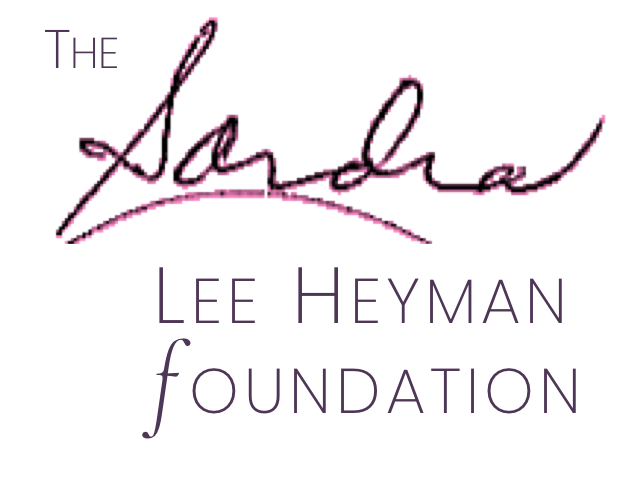Biomedical Engineering: It’s All About Solving Problems and Improving Healthcare
The field of biomedical engineering is so diverse that “there’s no single definition or description of what a biomedical engineer does since it can be so varied,” according to Dr. Eileen Haase, a Johns Hopkins University teaching professor as well as vice chair of Hopkins’ academic programs and chair of their online MS program in applied biomedical engineering. There are a host of specialties in the wide-ranging field, although “they all are about improving healthcare,” she told Sandra Lee Heyman Fellows in a November discussion.
Some biomedical engineers focus on imaging, including how to design instrumentation so that the patient receives less radiation. Some pursue ways to use an individual’s cells to design more effective cancer treatments or to regenerate a new pancreas. Others zero in on the interface between the brain and machines and apply that knowledge to control prosthetics via a patient’s brain. The possibilities seemed endless as Haase described them.
“I think of engineers as solving problems,” and that applies equally to biomedical engineers. “Sometimes it’s just a device, sometimes it’s a process that is the problem. That makes it different from pure research,” she added. Haase emphasized that there is an enormous opportunity and role for biomedical engineers to address the current state of healthcare access. “Basically, we're trying to improve healthcare...by making it more accessible, by making it more reliable, by making it more equitable, by making people who can't get access to healthcare get that access.”
Another guest speaking to the fellows at the same session, Shiker Nair, is an associate computational biologist in the PRISM lab at the Broad Institute of MIT and Harvard. (He also is a biomedical engineering graduate from the Johns Hopkins Whiting School of Engineering and one of Haase’s former students.) His laboratory screens high volumes of test agents on a repository of almost 1,000 cancer cell lines in a quest to identify targeted cancer treatments that may reside among already approved drugs used for other purposes.
Nair told the fellows that biomedical engineers are asking the question “How do we understand the massive amounts of data available” to them and “personalize the way that we diagnose and treat patients?” He described the promise of artificial intelligence (AI) to advance the field. When asked whether he is worried about AI technologies threatening the jobs of biomedical engineers, Nair shrugged off that prospect, saying that the “field of biomedical engineering is positively benefiting from artificial intelligence.”
Fellows posed questions ranging from multiple queries about how cells work to the future of the biomedical engineering field and whether a biomedical engineering undergraduate degree is required in order to do an advanced degree in the field. It’s not, said Haase – who speaks from personal experience, having received a BS degree in engineering science & mechanics from Virginia Polytechnic Institute, a master’s degree in electrical engineering from the Johns Hopkins School of Engineering, and a PhD in biomedical engineering from that university’s School of Medicine. Nor is there a single pathway for biomedical engineers after they receive their undergraduate degrees. They learned from Haase that many biomedical engineering graduates go on to medical school, seek higher level engineering degrees in the same or different disciplines, become lawyers, or start companies.
Like many previous guests who have spoken to the fellows, both speakers pointed to the value of internships in their own careers. Nair had a chance to do research at nearby Drexel University during his sophomore and junior years in high school. Haase – who has taken her students to everywhere from Six Flags Adventure Park to study the biomedical effects of steep and rapid drops as well as to Uganda – touted the benefits of such experiences and also supported students doing gap years and programs overseas to expand their horizons. She cited the many internships with federal science and engineering agencies that are available to area high school students.
Haase became interested in STEM at her all girls’ religious high school. “I got used to math and physics classes with all girls. I thought it was perfectly normal, and I was taught by nuns who love math and love physics....And then I got to Virginia Tech, and there were a lot of classes where I was the only female.” That is a phenomenon that she confessed to not understanding. Haase added regarding STEM and engineering in particular, “I think it's great for women. I think it's a really cool career!”
Asked for bottom line advice for the fellows, Nair encouraged them to reach out to those who could help them along the way. “Don’t be afraid to get a rejection, because all it takes is one person to help you out. You just need that first steppingstone experience to get the ball rolling” he urged the students.
“Nobody graduated saying, boy, that was easy. It is hard work. Ask peers for help. Ask upper classmen for help. Ask faculty for help. You know. If it were easy, then everybody could easily get this degree....Go for it, but never be afraid to ask for help.”
The Sandra Lee Heyman Foundation is a 501(c)(3) nonprofit organization established in memory of Sandra Lee Heyman, a long-time mathematics teacher at the elementary, middle school, high school, and community college levels. The 18-month long Fellowship is aimed at promising high school students who have the opportunity to meet with STEM leaders, visit prominent institutions in the Washington, D.C., area, and access peers and mentors to support career exploration in STEM fields. There are multiple ways to support the Fellowship program, and donations to the Foundation are tax deductible.
